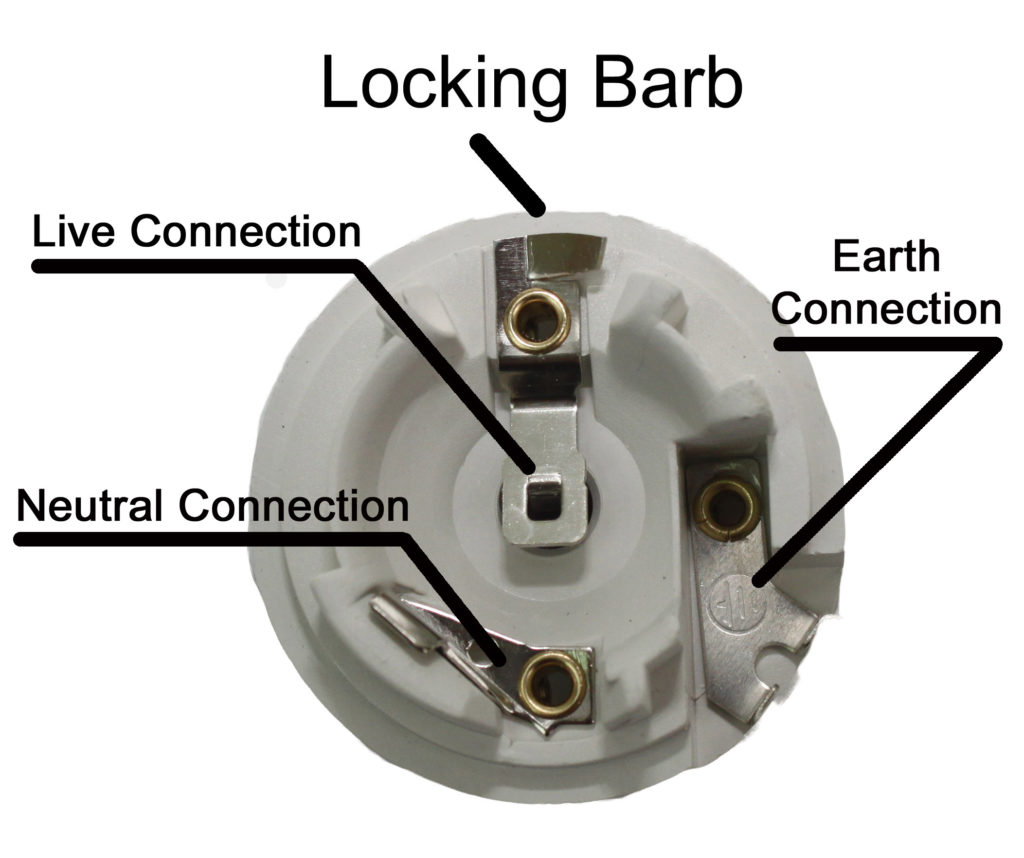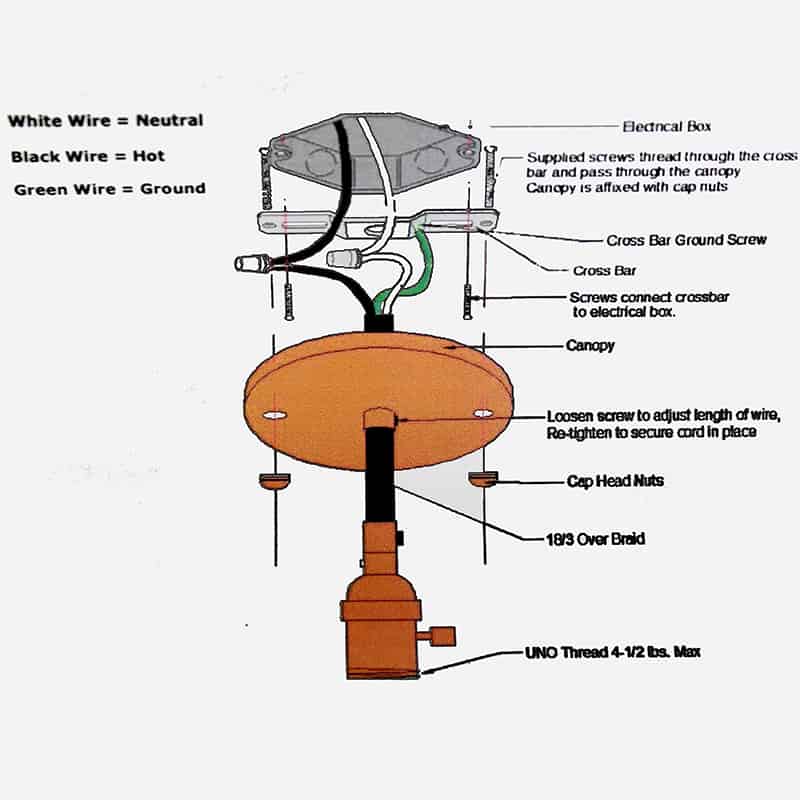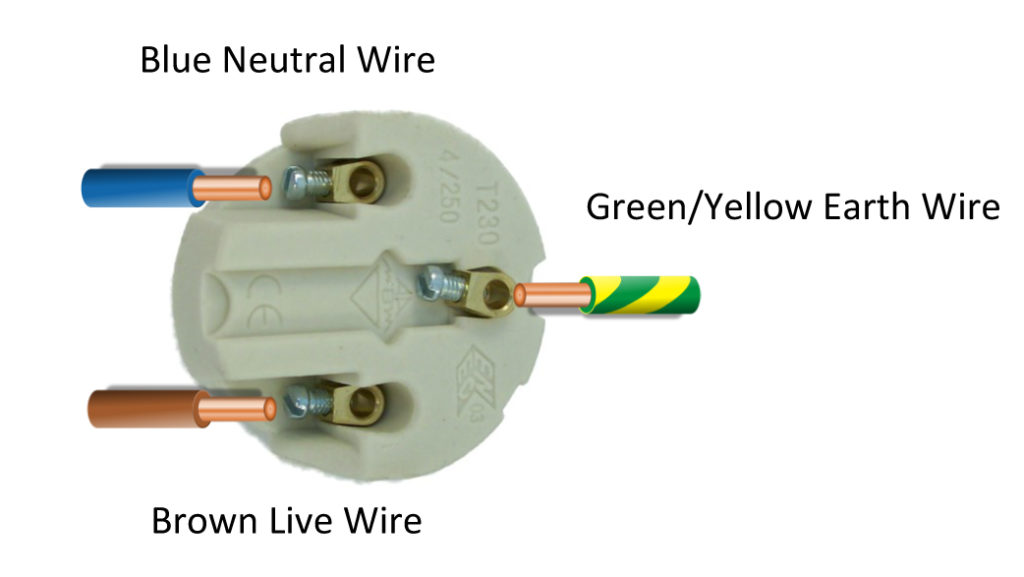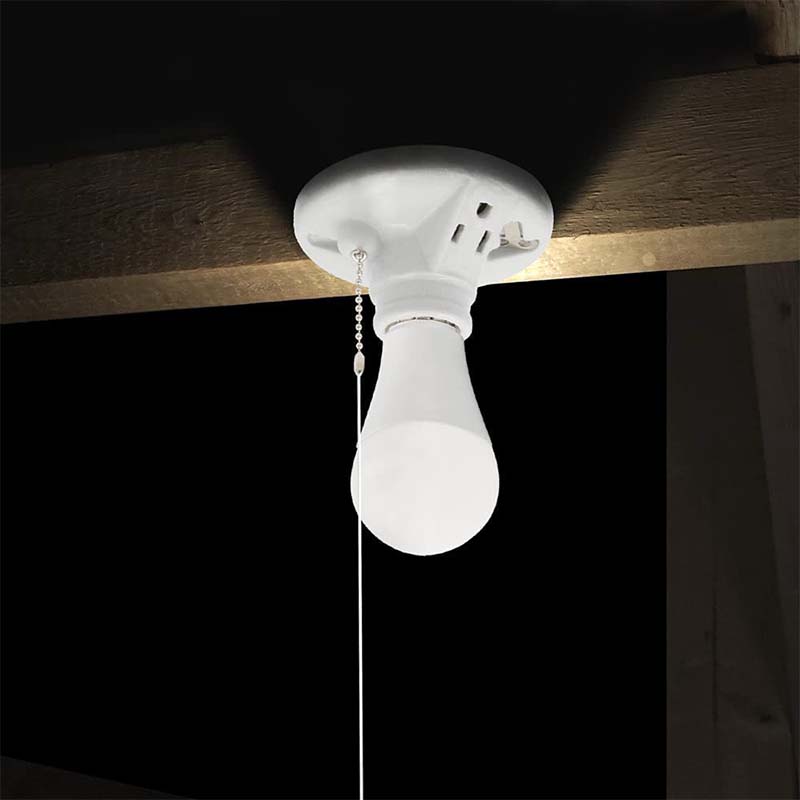An improper connection of a lamp holder could cause an electrical hazard or a malfunction. Learn how to make the correct connection.
To wire a lamp holder, you connect the live (brown) wire to the brass terminal and the neutral (blue) wire to the silver terminal. Make sure you have proper insulation and grounding if required.
Here’s a detailed, step-by-step guide to wiring lamp holders safely.

Key Components of a Lamp Holder
A lamp holder consists of two main terminals: the live terminal, usually made of brass, and the neutral terminal, which is typically silver. The live wire (brown in most standards) carries the current to the bulb, while the neutral wire (blue) returns the current back to the electrical system.
Some lamp holders also feature a grounding screw, especially in metal fixtures. This screw is used to attach the ground wire, providing an additional layer of safety by redirecting any electrical surges or faults away from the user.
Tools Required for Wiring a Lamp Holder
Before wiring your lamp holder, make sure you have the proper tools. These include wire strippers, a flathead or Phillips screwdriver (depending on the lamp holder screws), a multimeter for testing, electrical tape, and a lamp holder. Additionally, you may need a plier for twisting and securing wires.
Having the right tools ensures that all connections are made properly. This will reduce the risk of loose wiring, which can cause electrical hazards or affect the functioning of the lamp holder.

Step-by-Step Process for Wiring
- Turn off the Power: Always turn off the power supply at the main breaker before starting.
- Prepare the Wires: Using a wire stripper, remove about 1 cm of insulation from the live and neutral wires. Be careful not to damage the wire strands inside.
- Connect the Live Wire: Attach the live (brown) wire to the brass terminal of the lamp holder. Tighten the screw to secure the wire.
- Connect the Neutral Wire: Attach the neutral (blue) wire to the silver terminal. Ensure it is securely fastened with the screw.
- Grounding (if applicable): If your lamp holder has a grounding terminal, connect the ground wire (green or bare) to the grounding screw.
- Secure the Lamp Holder: Fit the lamp holder into its mounting position and secure it in place according to the fixture design.
- Test the Connections: Use a multimeter to ensure the connections are correct before turning on the power.
By following these steps, you can successfully wire a lamp holder while minimizing the risk of electrical problems.
Grounding Requirements for Lamp Holders
Not all lamp holders require grounding, but it is highly recommended for added safety, especially in metal fixtures. Grounding prevents accidental electric shocks by providing a path for stray electrical currents to dissipate safely.
If your fixture is metal, the ground wire should be connected to the grounding screw on the lamp holder. The grounding wire is usually green or bare copper and plays a critical role in ensuring the safety of the setup.
Wiring a 2-Wire Lamp Holder
In a 2-wire lamp holder, only two wires are involved: live and neutral. The live wire should be connected to the brass terminal, and the neutral wire should be connected to the silver terminal. This simple configuration is often used for standard, single-bulb setups where grounding may not be necessary.
Ensure both wires are securely attached to prevent any loose connections, as exposed wires could result in short circuits or electrical failures.

Does Polarity Matter in Lamp Holder Wiring?
Yes, polarity is crucial when wiring a lamp holder. The live (brown) wire should always be connected to the brass terminal, and the neutral (blue) wire to the silver terminal. Reversing these connections may not cause the lamp to malfunction immediately, but it poses significant safety risks, such as the fixture remaining live even when the switch is off.
Incorrect polarity can also cause electrical shocks when handling the bulb or fixture, so always double-check your connections before turning on the power.
Common Mistakes to Avoid
- Reversing the polarity: Connecting the live wire to the neutral terminal and vice versa can lead to dangerous conditions.
- Loose connections: Ensure the screws are tightened properly, but don’t overtighten, which can damage the terminals.
- Skipping grounding: In fixtures that require grounding, neglecting this step can result in electric shocks or system failures.
Avoid these common errors to ensure your lamp holder works safely and efficiently.
Three-Wire Lamp Holder Systems
A three-wire lamp holder system includes a ground wire in addition to the live and neutral wires. In this setup, the ground wire (green or bare) connects to the grounding screw, the live wire (brown) connects to the brass terminal, and the neutral wire (blue) connects to the silver terminal.
This type of system is more common in metal fixtures or higher-power setups where safety is critical. The ground wire helps prevent electrical shock by providing an alternative path for electrical currents during a fault.

Testing and Finalizing the Connection
After wiring, it is important to test your connections with a multimeter to check for continuity and correct polarity. Place the multimeter probes on the live and neutral terminals to ensure a proper connection before turning the power back on.
Once everything is tested and verified, turn on the power and test the lamp by switching it on. If the lamp does not work, revisit your connections to ensure they are correct and securely fastened.
Choosing the Correct Wire for a Lamp Holder
Choosing the correct wire size is essential for the safety and performance of your lamp holder. For most standard lamp holders, a 1.5mm² wire is sufficient. Ensure the wire insulation is intact and rated for the voltage of the fixture. Using wires with damaged insulation or wires that are too thin can lead to overheating or short circuits.
Using the correct wire size also ensures that the fixture operates efficiently and prolongs the life of both the wiring and the lamp holder.
By following proper wiring practices, you can ensure a safe and reliable installation of your lamp holder.













